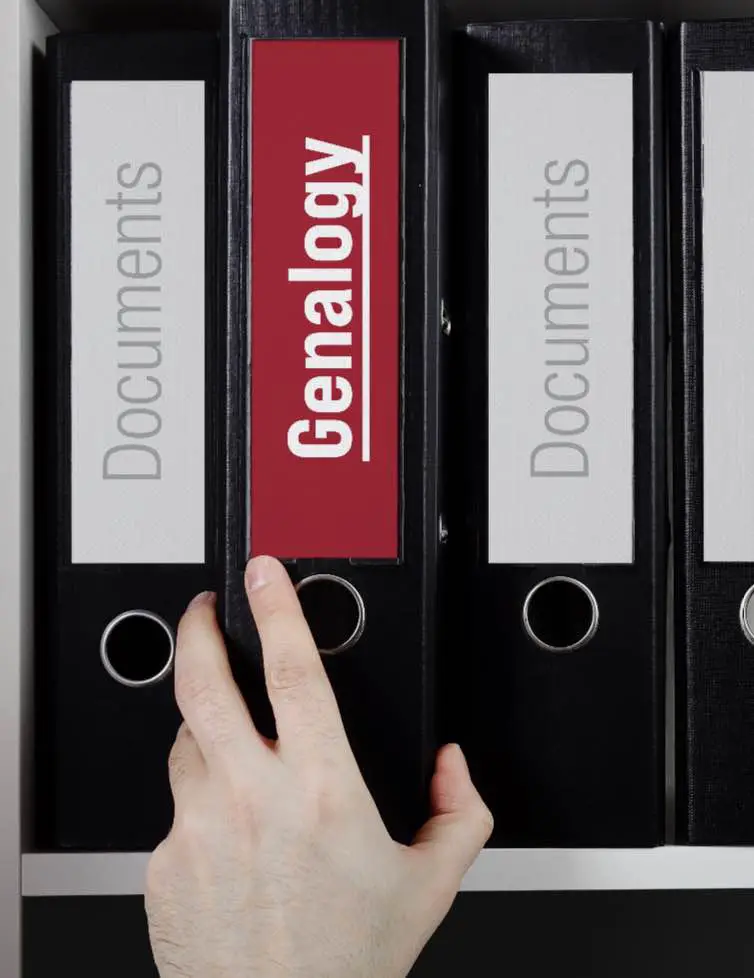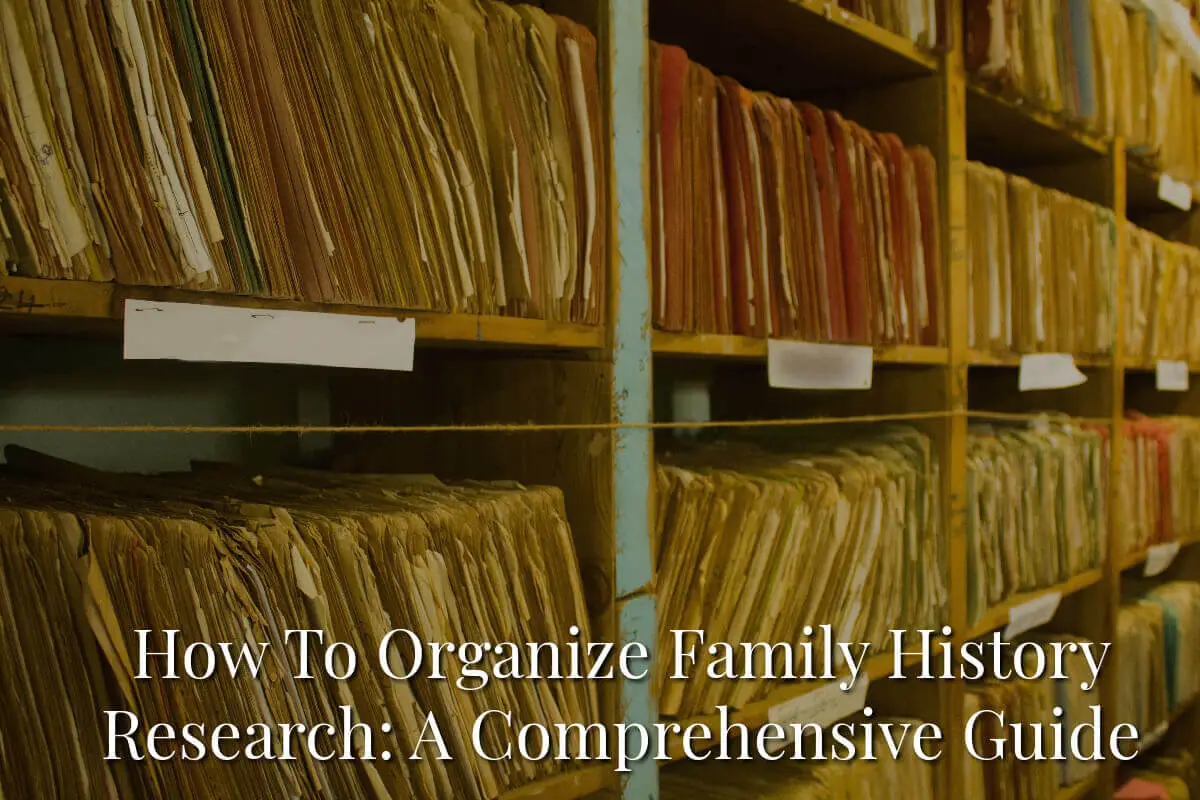Genealogy research is not just a pastime; it’s a rigorous exercise in research. Whether you’re a professional genealogist or a passionate hobbyist, the role you assume is that of a researcher.
As any experienced researcher knows, organization is not just beneficial; it’s essential. Unorganized records can quickly become an obstacle in your path, causing you to go over the same ground repeatedly and hampering your progress. Read on as you give tips to help you keep your genealogy records organized and why this is important.
Table of Contents
- How To Organize Family History Research: A Comprehensive Guide
- Digital Information: Your Online Archive
- Physical Information: Your Tangible Heritage
- Merging The Two Worlds: Synchronizing Digital And Physical Information
- Related Questions
How To Organize Family History Research: A Comprehensive Guide
Genealogy is a labor of love and fundamentally about data and information. If you’ve embarked on tracing your family’s history, you already know how quickly notes, birth certificates, photographs, and other documents can pile up.
Amid the thrill of unearthing a great-great-grandmother’s name or the location of a long-lost family estate, organization is essential. Otherwise, you’ll find yourself repeatedly sifting through the same information, wasting valuable time that could be better spent on further discoveries.
Family history research has evolved to include paper trails and electronic data in today’s digital age. The key to efficient and effective research is organizing both these types of information systematically.
Let’s delve into ways to manage your digital assets and physical documents effectively.
Digital Information: Your Online Archive

Utilize Genealogy Websites
Websites like Ancestry.com and FamilySearch.org are excellent platforms that offer a structured way to input and save your research. They serve as centralized databases where you can enter names, birth dates, marriage details, and other crucial facts about your ancestors.
Why We Love FamilySearch.org
FamilySearch.org is a free platform that doesn’t just limit your input to names and dates; it allows you to upload stories, memories, and photographs of each of your ancestors. This feature helps create a more nuanced profile, adding a personal touch to the numbers and dates.
Cloud Storage Services
Using cloud storage services like Google Drive or Dropbox is another approach to keep your digital information safe and accessible. You can scan and save physical documents online in an organized folder system.
How To Organize Your Digital Files
- Create Main Folders: One for each side of the family (maternal and paternal).
- Subfolders For Family Branches: For example, have separate folders for the “Smith” and the “Jones” families.
- Individual Files: Create files for family members, including all pertinent information like birth and death certificates, photographs, and any stories or memories.
- Consistent Naming Conventions: Use a standard naming system for all your files to locate them quickly.
Physical Information: Your Tangible Heritage
While digital is the way forward, we still have physical documents like handwritten letters, old photographs, and birth and death certificates. How you store and organize these can also impact the efficiency of your genealogical research.

Use A Filing System
- Color-Coding: A color-coded filing system helps in quick identification. You can designate a color for each family branch or categorize it by types of documents (e.g., green for birth certificates, blue for marriage certificates).
- Labels: Clear labels save you time while searching through your physical files.
Importance Of Scanning
It’s always good to have a backup. Scan or photograph all your physical documents to save them digitally. This ensures you can access the information without losing the original copies.
Tips For Scanning
- High Resolution: Always scan documents and photos at high resolutions for better quality.
- Metadata: Add metadata or notes to the digital files to help you and future generations understand the context.
Store Physical Documents Safely
Invest in acid-free folders and safe storage boxes to preserve your documents for the long term. Environmental factors like moisture and light can degrade paper quality, so keeping them in a cool, dark place is recommended.
Merging The Two Worlds: Synchronizing Digital And Physical Information

The true magic happens when you successfully sync your digital and physical archives, creating a robust system that aids rather than hampers your research.
- Reference the Physical in the Digital: Add notes about where to find the corresponding physical document in your digital folders.
- Sync with Genealogy Software: FamilySearch and other platforms often allow you to upload digital copies of physical documents. Utilize this feature to keep everything in one place.
- Keep Backup Copies: Along with storing your scanned copies on cloud storage, you can save them on external hard drives for added safety.
There’s immense joy in tracing back your roots, understanding your heritage, and unearthing stories that have long been forgotten. However, the path to these discoveries is fraught with data—dates, names, locations, and so on.
Your ability to efficiently organize this information will directly impact your success in genealogical pursuits.
So, use the technological tools available, and don’t underestimate the power of an excellent old filing system.
The Hummel Family is a website all about Family History research. We focus on Swedish, German, English, Scottish, and American Genealogy. We also discussed Asia and China, as we had ancestors who spent many years in China.
You are welcome to join us and become part of our community by signing up for our FREE newsletter, The Hummel Family; sign up by clicking here.
Check out our Youtube Channel, Family History Buzz, by clicking here.
Related Questions
How Reliable Is The Genealogy Website FamilySearch.org?
FamilySearch.org is a very reliable genealogy website. It is considered one of the best genealogy-focused research websites in the world. One of the best things about this is that the website is free for everyone, regardless of affiliation or religion. The website has millions of genealogy records, which have been updated daily. It is also a collaborative website, and you may find relatives ready to work on your family line so you can tap into the work they have already done.
You can discover more by reading How Reliable Is The Genealogy Website FamilySearch.org? by clicking here.
About Setting Up A Free Ancestry.com Free Account
Setting up an Ancestry.com free account is something that many people are interested in, whether they have a basic curiosity about their family tree or they’re looking for more in-depth research. Creating an Ancestry Account is the first step in getting started with Ancestry, providing you with access to Ancestry’s billions of historical records.
You can learn more by reading About Setting Up A Free Ancestry.com Free Account by clicking here.
What Is The Purpose of Genealogy?
Genealogy aims to study family history and trace our lineage or ancestors. Genealogy’s purpose goes far beyond our ancestors’ dates, names, and places. This is because you learn more about your family and yourself as you do your genealogy. Genealogy helps unite and link families as you discover things about your family that you did not know.
By clicking here, you can learn more about Genealogy by reading our blog, What Is The Purpose of Genealogy?
